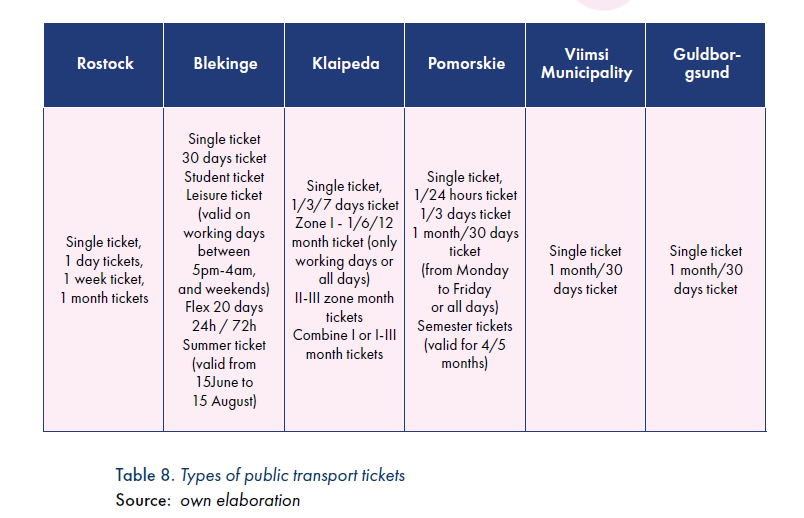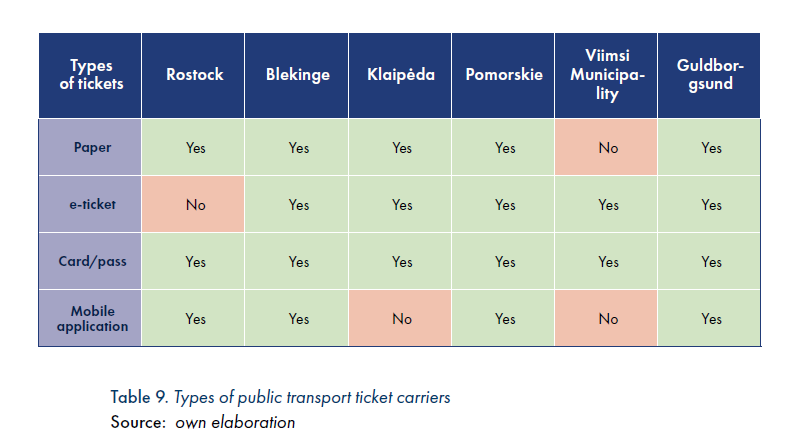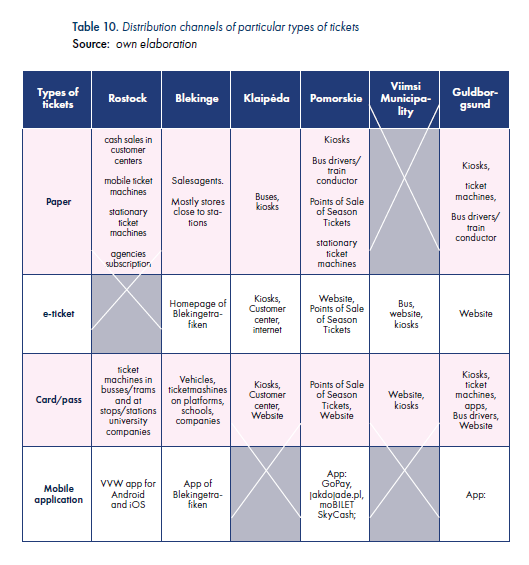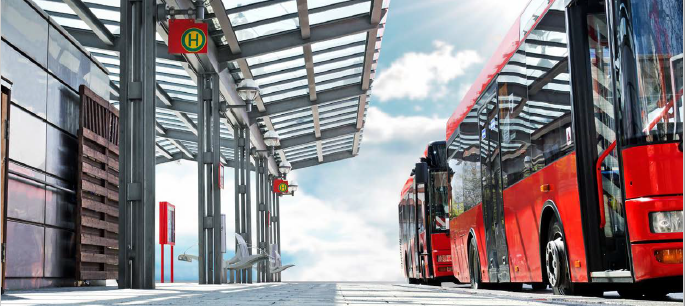
TARIFF AND TICKETING SYSTEM SOLUTIONS
In all analysed regions there are tickets for passengers who do not use public transport regularly, but occasionally or for a single journey (single-journey/hour/24-hour tickets). There are also seasonal tickets (30-day/monthly/90-day/semester tickets) for passengers who use public transport regularly to meet their daily travel needs. Among regions under analysis, Bleckinge and Pomorskie provide the largest offer of public transport tickets.
Estonia is perceived by many as ‘the most advanced digital society in the world’1. Therefore, it is no surprise that the area of Viimsi Municipality as the first from municipalities under analysis that decided to abandon distributing paper tickets and shift to e-ticket. The data carrier of public transport tickets in Estonia is ID card or smartcard. City cards are issued anonymously but every passenger has a possibility to personalize their smartcard in a stationary point of sale or via Internet. Personalized card entitles its holder to benefit from discounts (thanks to integrating ticket system with the government database discount is calculated automatically for people with the status of a student, senior citizen or people with disabilities) and protects against the loss of ticket in case of theft or loss of card.
All other partner regions under analysis are still using paper tickets.

One of the activities taken by public transport operators aiming at facilitating the purchase of tickets by passengers is to introduce new data carriers of public transport tickets. The currently used carriers which are becoming more and more popular are mobile phone applications. They make it easier to buy a ticket without the need to wait at ticket machines or ticket validators and they do not divert driver’s attention from work. These days, the public transport ticket can be bought via mobile app in Blekinge, Pomorskie, Rostock and Guldborgsund. The app which enables buying public transport tickets is not only the ticket distribution channel but also the source of information on passengers. Via the app it is possible to transfer information on timetables, changes in timetables and location of public transport vehicles in real time.
Therefore, the solution helps to reduce the waiting time for passengers at the stops, making the time needed for door-to-door travel by public transport closer to travel by private car.

In regions under analysis, in order to facilitate the purchase of public transport ticket various distribution channels are used. In all regions passengers can purchase ticket on the means of transport (in ticket machines or at the driver’s). Moreover, in the analysed regions public transport paper tickets are distributed through the network of stationary points of sale. Most of the analysed regions provide also stationary ticket machines located at public transport stops and stations to distribute tickets.
Some analysed regions (Klaipeda, Pomorskie) differentiate ticket price depending on the distribution channel. Higher ticket price referring to tickets purchased at the driver’s are to discourage passengers to use this distribution channel, unless absolutely necessary. This is because the purchase of ticket at the driver's may affect the time the vehicle stays at the stop and consequently, the travel time. Whereas, the electronic distribution channels are favoured since they are characterized by the lowest operational
costs.
The e-tickets available in the majority of analysed regions make it possible to use them as „e-ports”.
It helps to integrate the public transport ticketing systems with ticketing systems of other institutions and buy tickets from various entities via the same data carrier. In Rostock, public transport e-ticket can be used as carrier for theatre ticket. In Viimsi Municipality, common ticket carrier is used by public transport, museums, ZOO, sport facilities and Park&Ride system.

